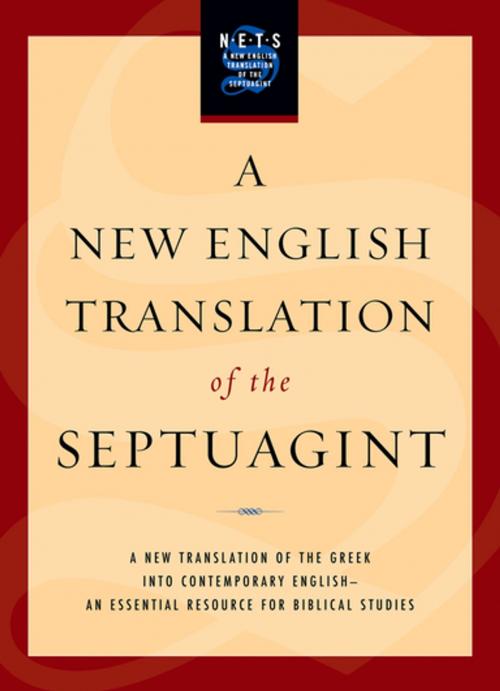A New English Translation of the Septuagint
Nonfiction, Religion & Spirituality, Judaism, Sacred Writings, Christianity, Church, Church History, Bible & Bible Studies, Bibles| Author: | ISBN: | 9780199743971 | |
| Publisher: | Oxford University Press | Publication: | November 2, 2007 |
| Imprint: | Oxford University Press | Language: | English |
| Author: | |
| ISBN: | 9780199743971 |
| Publisher: | Oxford University Press |
| Publication: | November 2, 2007 |
| Imprint: | Oxford University Press |
| Language: | English |
The Septuagint (the ancient Greek translation of Jewish sacred writings) is of great importance in the history of both Judaism and Christianity. The first translation of the books of the Hebrew Bible (plus additions) into the common language of the ancient Mediterranean world made the Jewish scriptures accessible to many outside Judaism. Not only did the Septuagint become Holy Writ to Greek speaking Jews but it was also the Bible of the early Christian communities: the scripture they cited and the textual foundation of the early Christian movement. Translated from Hebrew (and Aramaic) originals in the two centuries before Jesus, the Septuagint provides important information about the history of the text of the Bible. For centuries, scholars have looked to the Septuagint for information about the nature of the text and of how passages and specific words were understood. For students of the Bible, the New Testament in particular, the study of the Septuagint's influence is a vital part of the history of interpretation. But until now, the Septuagint has not been available to English readers in a modern and accurate translation. The New English Translation of the Septuagint fills this gap.
The Septuagint (the ancient Greek translation of Jewish sacred writings) is of great importance in the history of both Judaism and Christianity. The first translation of the books of the Hebrew Bible (plus additions) into the common language of the ancient Mediterranean world made the Jewish scriptures accessible to many outside Judaism. Not only did the Septuagint become Holy Writ to Greek speaking Jews but it was also the Bible of the early Christian communities: the scripture they cited and the textual foundation of the early Christian movement. Translated from Hebrew (and Aramaic) originals in the two centuries before Jesus, the Septuagint provides important information about the history of the text of the Bible. For centuries, scholars have looked to the Septuagint for information about the nature of the text and of how passages and specific words were understood. For students of the Bible, the New Testament in particular, the study of the Septuagint's influence is a vital part of the history of interpretation. But until now, the Septuagint has not been available to English readers in a modern and accurate translation. The New English Translation of the Septuagint fills this gap.















